



























Our avocado is just like the fruit you cut, pit and scoop minus all the cutting, pitting and scooping. And that translates to some serious time and labor savings. If you want the best part of the avocado without any of the work, give WHOLLY® AVOCADO a try. It’s 100% Hass Avocado and always ready to go.









































TRY IT YOURSELF. REQUEST A SAMPLE. SCAN THE CODE TO GET STARTED.












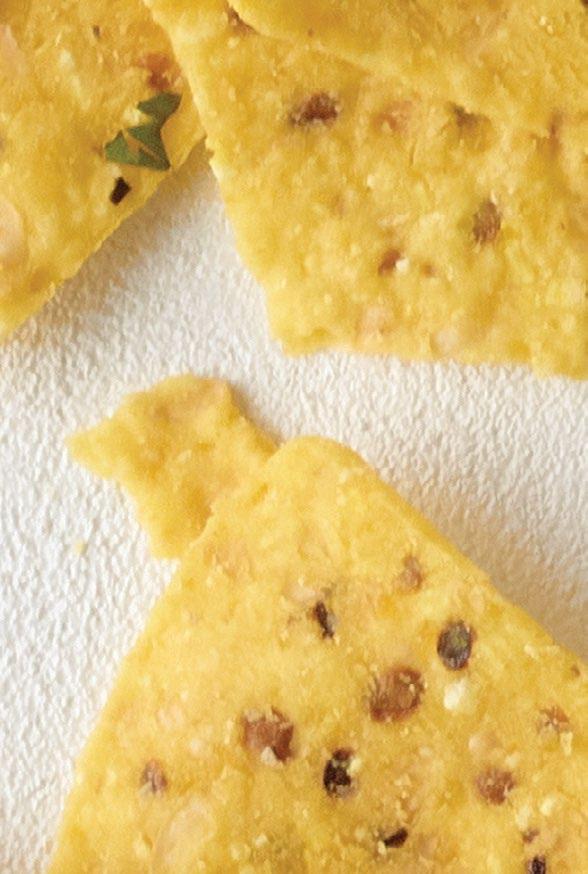

























It’s been a busy couple of months here at el Restaurante Publisher Ed Avis and I traveled to three weddings in six weeks (two in California and one in Wisconsin), all while scheduling interviews, writing stories, selling ads, and planning our booth set-up for the National Restaurant Show coming up May 18 – 21 in Chicago (thankfully, no travel needed).
This confluence of weddings and work has made me think of everyone who has to balance all of the can’tmiss personal events with all of the tasks that have to be completed while running a business. And while it isn’t easy — and yes, quite stressful at times — I’ve realized it is a very good position to be in.
The personal events are reminders that you are an important person in a close circle of family and friends — and I think that’s essential to remember no matter what else is going on in the world, good or bad (and there’s certainly way too much bad going on these days). And I have to admit that watching three young couples exchange vows and celebrate their marriages made me happy to know that they have all the confidence in the world that the future is bright.
The business challenges, too, can be viewed in a positive light. They’re reminders that having work to do in a job that you enjoy (at least most of the time!) is something many people never have the opportunity to experience.
I hope what we’ve been able to put together in the following pages helps lighten your workload at least a bit to give you a little more time for all of those personal events coming up in your lives this spring and summer.
If you’re at the National Restaurant Show in Chicago, be sure to visit us at Booth #5306!
PUBLISHER Ed Avis
EDITOR Kathleen Furore
ART DIRECTOR Ala Ennes
MAIN OFFICE phone: 708.267.0023
PRESS RELEASES TO: kfurore@restmex.com
MAILING ADDRESS P.O. Box 13347 Chicago, IL 60613
SHIPPING ADDRESS 1317 W. Belden Ave. Chicago, IL 60614
AD SALES/ENGLISH Ed Avis
708.218.7755 e davis@elrestaurante.com
Suzanne Bernhardt 678.880.9282 suzanne@elrestaurante.com
AD SALES/ESPAÑOL Alfredo Espinola 52-55-4006-9540 alfredo@elrestaurante.com
Published by
Maiden Name Press, LLC Volume 27, Number 3
el Restaurante (formerly el Restaurante Mexicano) (ISSN 1091-5885) is published six times a year by Maiden Name Press, LLC 1317 W. Belden Ave., Chicago, IL 60614 el Restaurante is distributed by subscription at the cost of $40. All contents copyright© 2024 Maiden Name Press, LLC. Nothing in this issue may be reproduced in any form without publisher’s consent.





Great salsas are part of a great dining experience. If you make especially good salsa, we want to know about it! For the second consecutive year, we are partnering with Sammic to uncover great salsa recipes through the el Restaurante Sassiest Salsa Contest.

Last year’s winning salsas were innovative and delicious. Pickled Jicama Verde Salsa by Chef James Lane won first place. Sammic Corporate Chef Enrique Fleischmann called it “original, risky, and with a very sophisticated and elegant flavor.” Salsa Macha by Angel Miranda at Flying Taco Mexican Grill in Towanda, Pennsylvania came in second, and Salsa de Nopal by Christopher Morrill at Taco Shop in El Paso, Texas took home the third-place prize. Click here to find the recipes for
all three salsas.
Entering the contest is easy, and the prizes make it totally worth it: The First Place Winner will receive a Sammic XM-52 Immersion Blender; the top three winners will get $750, $500 and $250, respectively; and all of the winning recipes will be used in our Recipe-of-the-Week email program and published in the November/December edition of el Restaurante.
“We know how important great salsa is to a Mexican restaurant, and we are happy to continue supporting a contest that encourages chefs to create new salsa recipes,” says Sammic’s Neal Pearlman, sales director, North America. “And we know that Sammic immersion blenders are an essential tool for restaurants making their own salsa, so offering them as prizes for this contest made sense.”
The deadline to enter your recipe is August 30, 2024. It must be an original creation (remember that we’ll publish the winning recipes, so don’t submit one you don’t want to share). The recipes will be judged by experienced chefs and the winners will be announced in September. Click here to enter. Good luck!

Don’t miss these spring and summer trade shows — and be sure to visit el Restaurante and our advertisers if you attend!

National Restaurant Show
MAY 18 21
McCormick Place, Chicago
BOOTHS
5306 el Restaurante
2031 Bridgford
7207 Mega Mex
9246 Neil Jones
7735 Optimal Automatics 7066, 9523 Orders.co
4063 Robot Coupe Booth
4468 Sammic
5629 Tortilla Masters Equipment
5828 V&V Supremo
Texas Restaurant Show
JULY 14 15

Henry B Gonzalez Convention Center, San Antonio, Texas
BOOTHS
1654 el Restaurante
721 BE&SCO Manufacturing
815 Bridgford
826 Don Diego Quality Foods
1336 Tortilla Masters Equipment
1048 V&V Supremo
Watch our website and our July/August issue for exhibitor information for the California Restaurant Show (August 25-27, Los Angeles Convention Center) and the Antojo Industry Trade Expo (October 13-14, Long Beach Convention Center).







• Made from Premium Cuts of Chicken
• Authentic Mexican Flavor
• Expand Your Menu to Non-Pork and Beef Meat Eaters



EDITOR’S NOTE: The hardest working people in your restaurant are probably the managers, and el Restaurante’s Manager of the Year program has honored hundreds of the best managers of Mexican/ Latin restaurants since it started in 2016. We thought it would be interesting to see how some of the early winners are doing. This is what we learned!
MIGUEL SOLANO , 2016 WINNER: Now He’s in Charge
When Miguel Solano won the first-ever el Restaurante Manager of the Year contest in 2016, he had worked at Azteca Restaurant in Toms River, New Jersey since arriving in the United States from Mexico 15 years before. He had been the manager for eight years, and he told us that loving the job is the most important part of being a good manager.
He still loves his job — and now he owns the restaurant!
Solano’s transition from manager to owner began when a fire destroyed the restaurant in July 2018. He kept his job because he also was managing an Italian restaurant owned by the same person, Tony Schiano. But Schiano decided not to re-open Azteca Restaurant.
“A lot of people were asking if we were going to re-open it, and [Tony] said no,” Solano recalls. “So, I told him, ‘Would it be OK if I open it?’ He goes, ‘Yeah, go ahead, re-open it.’”
That’s just what Solano did! He re-opened Azteca Restaurant in a new location, with a lot of help from Schiano, particularly with the paperwork involved in starting a restaurant, Solano says. And their working relationship didn’t end — Solano continued managing the Italian restaurant for Schiano.

“I was running back and forth between the Mexican restaurant and the Italian restaurant, and then, a few years later, we got the opportunity to open another location closer to where the restaurant was before it burned down,” Solano says. “So, at that point I had two Mexican restaurants and I was still managing the Italian restaurant.”
When Schiano decided to exit the business a couple of years ago, who did he turn to? Solano, of course, who bought the Italian restaurant from him!

“Then I had two Mexican restaurants, an Italian restaurant, and I had opened a catering business on my own,” Solano says. “A lot of things have happened in the eight years since I won!”
To keep all those businesses running, Solano relies on his wife, Sandra Solano, and his two sons. Miguel Jr., who was in culinary school when Solano won the contest in 2016, now manages one of the locations









A Sammic immersion blender makes your salsa preparation easier than ever! A powerful motor, easy-to-use controls and ergonomic design mean your staff can create amazing salsas, soups and other blended menu items with ease and speed. You will love the labor savings and your customers will love the results!

of Azteca Restaurant, and Cristian helps manage the Italian restaurant.
“I want to make it clear that without my family, we can do nothing,” Solano says. “We keep it all going with them.”
In February, Solano sold one location of Azteca Restaurant, but there is still plenty of work for everyone. The 2016 Manager of the Year is pleased with how his career has progressed.
“Everything is running smoothly,” he says. “I mean, it’s like any other business, there is a little headache every now and then, but we keep it going.”
Jairo Navarro had worked for Felipe’s Mexican Taqueria for five years and had managed one of the restaurant’s locations in Naples, Florida for most of that time when he was named the 2019 el Restaurante Manager of the Year.
We all know what happened at the beginning of 2020 — and COVID was just the beginning of the challenges Navarro faced!
“Back in 2019 we had three locations in Florida and then things went really, really hard for us,” recalls Navarro, who had to deal with even more than COVID
during his past few years as manager.
In September 2022, just as the pandemic was easing, Hurricane Ian destroyed Felipe’s Fort Myers location.
“It got flooded with nine feet of water,” Navarro remembers. “We lost that location. We supported the team members a whole lot during those hard times, and three of them from Fort Myers still work for one of the Naples locations. The main office [in New Orleans, where Felipe’s has four locations] was very, very kind to make sure everyone was taken care of.”
Staffing has been another challenge. Occasionally staff members are lured away by promises of more pay at other restaurants, Navarro says. Nevertheless, a core team has remained.
“We’ve been able to keep the main team for eight years since we opened in this market, so that means we’re doing something right,” he says. “We try to take care of them and make sure that they’re happy. We like to make it more like a family environment than just a regular job. If our team members are happy and our guests are happy, we will be able to meet any goal.”
Navarro says he is focusing on strengthening his Naples team and developing new leaders. He hopes that will allow him to launch a new location in South Florida next year. “That’s the main key right now for me,” he says.

But Navarro’s personal life also is on focus: After about two decades in America, he became a U.S. citizen in March!
“That is something that everyone wants to get,” he says. “It was another accomplishment.”

2024 Global Restaurant Trends Forecast from Technomic offers an update on the state of plant-based cuisine — and what is reveals is what many restaurateurs already realize, judging from the number of plant-based dishes and plant-based restaurants popping up on the culinary scene.

NATIONAL RESTAURANT SHOW TO FEATURE CULINARY DEMO WITH CHEF NINA CURTIS

Chef Nina Curtis will present a culinary demonstration featuring plant-based cuisine on Sunday, May 19, during the National Restaurant Show at McCormick Place in Chicago. The demonstration is scheduled from 11 a.m. – 11:45 a.m. at The Culinary Experience – Lakeside Level – 10448.
“With plant-based now a fixed menu influence globally, 2024 will be the year folks drop the fixation on whether it’s a growing or dying trend and instead approach it as the matured category it has grown into,” the forecast says. What does that mean for Mexican restaurants? To find out, Editor Kathleen Furore reached out Nina Curtis, an award-winning plantbased chef and Director & Executive Chef of Plant’ish & Co. Culinary Arts (who calls Mexican cuisine “one of my favorite foods”). She shares her take on the state of plant-based dining with el Restaurante readers.
The Super Taco from Tacotarianel Restaurante: Many people only think of meat/poultry/seafood substitutes when they hear the term “plant-based cuisine.” But Greener Ideal (an environmental news and green living publication in Ontario, Canada) reports that 2024 vegan trends are shifting towards a focus on whole foods, prioritizing ingredients like legumes, nuts, seeds, and whole grains. Is this a trend you’re seeing, not only for vegan consumers but for the dining out public overall?
Nina Curtis: What we’re witnessing is more than just a trend; it’s a paradigm shift. As consumers become increasingly aware of the health and environmental benefits of whole plant foods, they’re seeking out dishes that celebrate the natural flavors, texture, taste, and nutritional richness of ingredients like vegetables, fruits, legumes, nuts, seeds, fungi and whole grains. This shift isn’t confined to the vegan community; it’s resonating with the broader dining audience.
eRM: Mexican restaurants typically aren’t known as healthy dining destinations (think queso fundido, fried chips, chorizo). How can they rehabilitate their reputation so people start to think of them as places they can patronize for a healthy meal?
Curtis: Mexican cuisine is indeed renowned for its indulgent flavors and hearty dishes, but it’s important to recognize that within this rich tapestry of flavors lies a treasure trove of wholesome ingredients waiting to be explored — everything from vibrant vegetables like peppers, tomatoes, and avocados to nutritious staples like beans, corn, and ancient grains. The key lies in reimagining traditional recipes and techniques to prioritize health and wellness without compromising on taste. By harnessing
the natural flavors and textures of fresh produce and whole grains, Mexican restaurants can craft dishes that are not only mouthwatering but also nourishing and guilt-free.
Additionally, embracing modern cooking methods such as grilling, roasting, and steaming allows chefs to showcase the inherent goodness of ingredients without relying on excessive oil or heavy frying. And let’s not forget the power of herbs, spices, and citrus to elevate dishes, adding depth and complexity without the need for excessive salt or fat.
eRM: Are there bottom-line benefits restaurants can realize by using more plant-based ingredients?
Curtis: There are significant food cost and profit benefits that restaurants can realize by embracing plant-based ingredients. First, many plant-based staples such as beans, lentils, rice, and seasonal vegetables are often more affordable than animal-based proteins, allowing restaurants to reduce their ingredient costs without compromising on flavor or nutrition.
Plant-based ingredients also tend to have longer shelf lives and are more
(continued on page 20)
“Mexican cuisine is indeed renowned for its indulgent flavors and hearty dishes, but it’s important to recognize that within this rich tapestry of flavors lies a treasure trove of wholesome ingredients waiting to be explored… The key lies in reimagining traditional recipes and techniques to prioritize health and wellness without compromising on taste.”
CHEF NINA CURTIS














OUR MOLE IS A LABOR OF LOVE.
WE DO ALL THE LABOR. YOU GET ALL THE LOVE.
When it comes to mole, time is your most important ingredient. But who has the hours and hours it takes to get it right? We do. And we take the time to make it the right way so you can share it the easy way. DOÑA MARIA® Mole Rojo promises the truly authentic flavors of a generations-old family recipe in just a matter of minutes.


ASK FOR A TASTE
RICH FLAVOR




(continued from page 17)
versatile in their applications, meaning that restaurants can minimize waste and maximize efficiency in their operations. This not only reduces overhead costs but also contributes to a more sustainable business model.
As consumer demand for plant-based options continues to rise, restaurants that offer a diverse selection of plant-based dishes can tap into new market segments and attract a broader customer base. This not only boosts revenue but also fosters loyalty and repeat business among health-conscious diners. And incorporating plant-based ingredients allows restaurants to diversify their menu, creating opportunities for upselling and cross-promotion. By showcasing the creativity and innovation behind plant-based dishes, restaurants can command higher prices and increase profit margins, all while catering to the growing demand for healthier and more sustainable dining options.
The financial benefits of using more plant-based ingredients extend far beyond cost savings. By embracing plant-based options, restaurants can optimize their operations, attract new customers, and enhance their bottom line, all while contributing to a more sustainable and ethical food system. It’s a win-win for both businesses and the planet.
eRM: How can Mexican/Latin restaurants decide how far to go with adding more plant-based/vegan/vegetarian options? And how can they promote those on their menu?
Curtis: First, when deciding how far to go with adding plantbased options, restaurants should consider their target audience, market demand, and culinary identity. While some establishments may opt for a complete overhaul of their menu to cater exclusively to plant-based diners, others may choose to introduce a selection of plant-based dishes alongside their traditional offerings to provide more inclusive dining experiences.
One effective approach is to conduct market research and gather feedback from customers to understand their preferences and dietary needs. This insight can inform menu devel-
opment and help restaurants strike the right balance between plant-based and non-plant-based options. External market research is also key. Sites such as Veganuary provide global insight into plant-based/vegan trends that restaurant owners can pull from. By leveraging resources like Veganuary, restaurants can stay ahead of the curve and tailor their offerings to meet the evolving demands of the market.
As for promoting plant-based dishes on the menu, there are several creative strategies that restaurants can employ. One option is to dedicate a special section or subsection of the menu specifically to plant-based/vegan/vegetarian options. This not only makes it easier for diners to identify these dishes but also sends a clear message of inclusivity and commitment to offering diverse culinary choices.
Alternatively, restaurants can use visual cues such as asterisks, icons, or other graphics to denote plant-based options within each menu category. This allows for seamless integration of plant-based dishes while still maintaining the integrity and flow of the menu layout.
eRM: Do you have any Mexican/Latin-inspired restaurants you’ve worked with and/or visited that do a good job with plant-based cuisine?
Curtis: I’ve drawn inspiration from successful restaurants like Gracias Madre in Los Angeles; El Grain Café in Los Angeles and Oaxaca, Mexico; Siete in New York City; Bambi Tacos in Sacramento; Vegan Cuban Cuisine in Miami; and L’Artisane in Coral Gables, Florida.
eRM: Do you have any final thoughts to share for restaurateurs exploring how to incorporate more plant-based dishes on their menus?
Curtis: In essence, the journey towards offering delicious, better-for-you plant-based options is not about abandoning tradition, but rather, it’s about embracing the inherent diversity and versatility of Mexican cuisine to create a dining experience that delights the palate while nourishing the body and soul. By showcasing the versatility and deliciousness of whole plant foods, restaurants can cater to a diverse range of tastes and dietary preferences while promoting sustainability and wellness. It’s an exciting time to be at the forefront of this movement, where innovation and creativity meet a profound commitment to health, flavor, and the planet.
See Curtis’ recipe for Black Rice Burrito Bowl on page 47.



simmered in coconut milk and roasted pepita cream sauce; a Vegan Torta with mushrooms, zucchini steak slices, onions, and garlic, cooked in salsa verde and topped with beans, lettuce, raw onion, tomato, and avocado on a telera roll; and Donas, made-to-order vegan beignets.
“We were very conscious of making sure our plant-based community felt embraced, and not that we were doing this as just a ‘special’ or a one-time thing,” the chef explains.
The results so far have been positive.
“We have been pleasantly surprised at how well the menu has performed,” Duran says, noting that Cesar’s carrot-based take on the Al Pastor Tacos and the creamy fire-roasted poblanos are two favorites.

| The way Mexican restaurants approach plant-based options depends on many factors — guests’ preferences, price considerations, and the overall concept among them.
At Cesar’s Killer Margaritas, a family-run, sit-down, tableservice restaurant in Chicago, Chef Lulu Duran and her team recently debuted a 100 percent plant-based menu to augment the restaurant’s regular menu. Cesar’s introduced the menu specifically for Meatless Mondays at the beginning of April.
“We have always had vegetarian options on our menu, but never [anything] 100 percent plant-based,” Duran says. “Our customers were definitely a huge influence on our decision, along with growing food costs, and trying to be more ecofriendly — everything came together to push this menu out.”
The all-plant-based menu includes a wide selection of dishes including Al Pastor Tacos with julienne carrots and diced onions in adobo sauce; Creamy Poblanos, two fire-roasted peppers stuffed with broccoli, cauliflower, mushrooms, and pepitas,
While three of the new plant-based tacos now appear on Cesar’s regular summer menu, the full plant-based menu is still offered on Mondays only.
“We have plans to expand to additional days of the week in the future,” Duran says.
The founders of Las Vegas-headquartered Tacotarian took a different approach when they opened their first location in the southwest part of the city in 2018, going all-in on the all-plant concept.
“My wife and I have been plant-based for quite some time, so early on we discussed with our partners the i dea to go fully plant-based,” co-founder Carlos Corral says. “It’s something that we’re passionate about because we feel very strongly about animal welfare. What separates us from other ‘vegan’ or plant-based concepts is that we’ve created an environment that is inviting for everyone. Seventy-five percent of our customer base doesn’t identify as vegetarian or vegan. They just crave good Mexican food, and ours happens to be made from plants.”

The menu — which features a wide variety of plant-based dishes that look and taste extremely similar to the more meaty renditions popular on non-plant-based menus — has been “tweaked and streamlined” since Tacotarian’s debut.
“We added ceviche, replacing the seafood with cauliflower. It’s a simple swap, yet the flavor is all there, and most people who order it can’t even tell the difference,” Corral says “Some items got stale, others got too labor intensive.
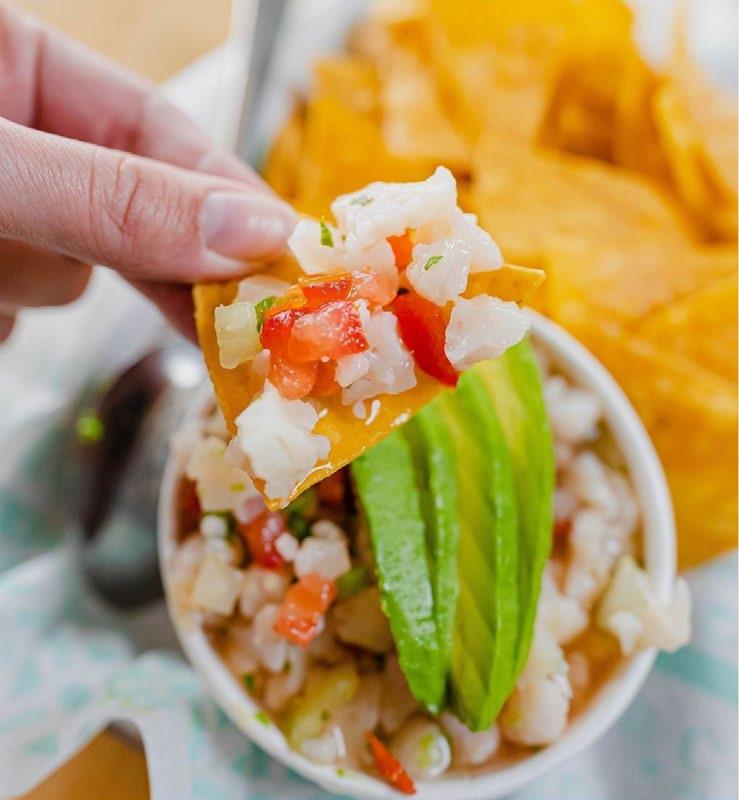
On occasion, a special that is supposed to be for one month is just too good and customers can’t live without it. So, we’ve kept a few specials like the Birria Platter and the Crunchwrap. It’s always important to keep a close eye on what’s working and what isn’t.”
The most popular selections are those made with housemade, proprietary proteins — the plant-based asada, barbacoa, birria, and pastor. “But it is challenging to make everything in-house, especially when our menu is so large,” he adds, noting that Tacotarian puts its own spin on purchased items like those from Beyond™ by adding seasonings and salsas.
The formula is working: Tacotarian has expanded to five locations (“soon to be six,” Corral reports).
And he isn’t stopping there.
“In 2022 we opened our first location in another state — it’s in San Diego — and we’re just getting started,” he says. “The goal is to have at least one Tacotarian in every major city.”
Adding more plant-based dishes to menus currently reliant on beef, pork, chicken and seafood might seem the ideal antidote to food prices that continue to rise.
That has been the case for Cesar’s, even though the full plant-based menu currently is only offered on Mondays.
“From a cost perspective, implementing this menu has been huge! When you’re talking about paying $15/lb. for skirt steak, and then you compare that to carrot pieces, there’s no question about the effect it has economically,” Duran says.
That isn’t necessarily the case across the board, Corral notes.
“I’m sure a lot of people might assume that vegetable-based food is automatically cheaper, but that isn’t always true,” he says. “To start, our seitan-based proteins are very labor intensive and sensitive, which adds to the cost. But alternatively, some vegan products like mayo, cream cheese or a few other items are much pricier than their animal-based counterparts. So, we still have to keep a very close eye on food costs, just like any other restaurant.”
See recipes for Cesar’s Soyrizo Tacos and Tacotarian’s Cauliflower Ceviche on page 47.
Kathleen Furore is the editor of el Restaurante.



When Pedro “Pete” Mora opened his first restaurant in 2002, the then-23-year-old believed a full-service Mexican concept with a full bar and 60 tables would be the route to success. What he learned from that business — Poblano’s in Meyerland, Texas — was that fajitas were what customers really craved. That lesson made him ask himself how to best retool the restaurant; the answer was to close Poblano’s and open Fajita Pete’s in 2008.
Pete’s new concept quickly blossomed, thanks in no small part to a natural disaster.
“Inauspiciously, a hurricane hit soon after the new store opened and other businesses and homes quickly lost power; miraculously, we were still up and running, so the staff cooked during the storm and delivered fajitas to the community,” the company’s website explains. “From the beginning, we made it our mission to show people just how far we would go to serve quality fajitas — something we have repeated through every hurricane and every sunny day since the first location opened.”
Here, Mora shares how his initial concept grew into the fast-growing, Houston-based Tex-Mex chain.

1Fajita Pete’s opened its doors in 2008, followed by what’s been described as a “new concept” in 2015. How is the new concept different from what you were doing in 2008?
Fajita Pete’s stemmed from a full-service restaurant in its previous iteration. While figuring out the new ins and outs in 2008 we had multiple items on the menu. The “new concept” put the full focus on a simple menu that could be scaled inhouse through catering and delivery, as well as brand-wide, through expansion into 1200-square-foot streamlined kitchens that scratch-make sides and cater and deliver to the local communities they serve.

“The fact that we focus on r taurant quality f d in sma f tprints a ows our ticket av ag to be in the $60 to $80 range…The fact that 98 p cent of our sal are o premise a ows us to compete and thrive in this market.”
PEDRO “PETE” MORA2
Who owns the company? Has that changed recently — for example, are there new investors?
I started the concept, and in spite of all of my shortcomings, it proved to be a very profitable model. In 2015, with the focus on expansion, Joey Eguia joined me and we became more intentional about franchise growth. In 2018, Evolve Restaurant Group came on board and invested in Fajita Pete’s and helped to expedite the rebrand. They provided [knowledge from] years of experience in growing businesses and allowed Hugh Guill [part owner and franchisee] and Baker Tilney [an investor and financial advisor] to work alongside Joey [now chief operating officer] and me in the day-to-day shaping of the business.
3 How many existing locations are there? And what are your growth plans?
To date we have awarded 108 franchises and have currently opened 31 locations. We have one corporate location, and the rest are franchised. This year we [have already



opened three locations and] will open five more locations, which will all be franchised. We are excited to have already opened Chicago, Pittsburgh, and Bellaire, Texas. And we are working on Westlake in Austin; Wichita Falls, Texas; Kingwood, Texas; Puerto Rico; and Plano, Texas.
4It’s been reported that your catering orders were up 30 percent and that website visits to the Fajita Pete’s catering form rose by 65 percent year-over-year in 2023. What do you think has made Fajita Pete’s so successful?
Fajita Pete’s business model offers protection in this volatile market and industry. The fact that we focus on restaurant quality food in small footprints allows our ticket averages to be in the $60 to $80 range. Our focus on corporate catering offers our operators a chance to capture sales in an efficient manner
by executing our simple menu offerings to large numbers of customers at once. The delivery aspect in the evenings offers families in the surrounding neighborhoods a high-quality offering from a concept that had delivery and off premise consumption as its primary objective from day one. The fact that 98 percent of our sales are off premise allows us to compete and thrive in this market.
5How do you pitch the concept to new potential franchisees?
Luckily, we have not done much in outreach for franchisees and have been blessed to receive inbound/organic interest. Our goal is to have growth from within our current franchisees so that we can scale in an efficient manner. You have to focus on the next meal in this business and we feel that as long as we execute on our quality and convenience, growth will take care of itself.






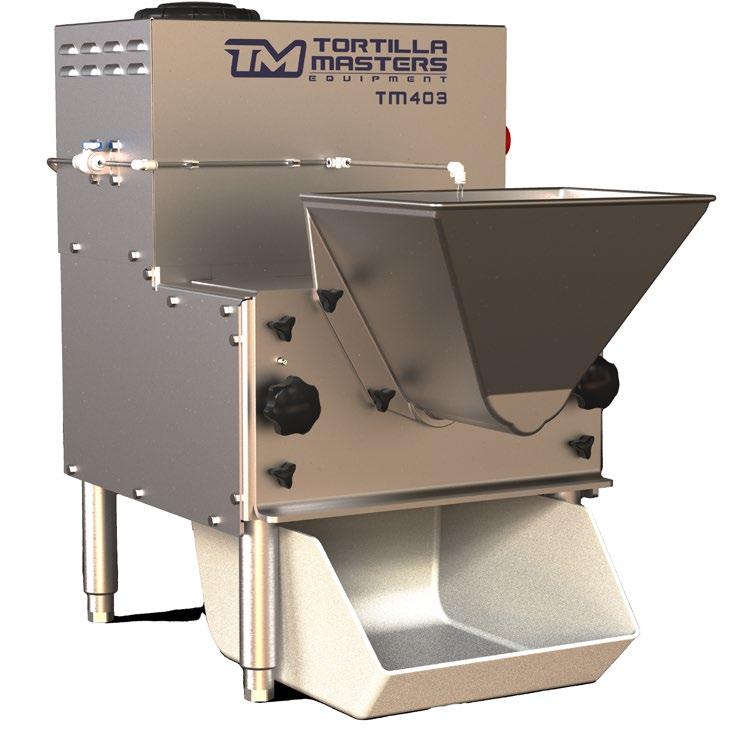

“ The ‘new concept’ put the fu focus on a simple menu that could be scaled in-house through cat ing and delivy, as we as brand-wide, through expansion into 1200-square-f t reamlined kitchens that scratch-make sid and cat and deliv to the local communiti they s ve.”
PEDRO “PETE” MORA








| BY KATHLEEN FURORE | Hispanic cheeses always have been go-to ingredients for many Mexican restaurants. With the popularity of these quesos growing, and with so many types to choose from, how can you decide which ones to add to your kitchen’s inventory?
Recent data from the California Milk Advisory Board (CMAB) offers some insight.
“Based on CMAB’s research through Technomic, queso fresco and quesadilla cheese represented the largest volume — 70 percent — of Hispanic-style cheeses used by restaurant operators, followed by cotija,” reports Katie Cameron, California Milk Advisory Board Foodservice. “All major Hispanic-style cheese/
dairy products are projected to grow through 2025.”
While volume is a key consideration because it offers a snapshot into what your competitors likely are using, it’s also important to consider what’s trending.
“Based on Technomic Q4 2023 menu data, panela is listed as one of the fastest-growing cheeses, with a YOY growth of 11.1 percent,” Cameron shares. “This is being driven by the West, where menu mentions are up over 20 percent.”
To find out how chefs on the front lines are using Hispanic cheeses, el Restaurante reached out to Jeff Smedstad, chef/owner of Elote Café in Sedona, Arizona, for his take on the trend.
(continued on page 30)
“Based on Technomic Q4 2023 menu data, panela is li ed as one of the fa t-growing ch s , with a YOY growth of 11.1 p cent.”
KATIE CAMERON, California Milk Advisory Board

Considered the Parmesan of Mexico, this traditional Mexican cheese gets its name from the town of Cotija in the state of Michoacán, where it originated more than over 400 years ago. This hard, white, crumbly Mexican cheese is made from cow’s milk and has a bold, salty flavor and coarse texture ideal for sprinkling over beans, salads, soups, tacos, enchiladas, nachos, or even mixing into dressings and sauces. The saltiness, texture, and flavor of Contigo® Grated Cotija Cheese is an excellent way to add the finishing touch to an entrée.

How are chefs creating great-tasting cheese dishes while saving on food and labor costs, too?

When the California Milk Advisory Board asked Chef Ben Díaz, founder of CBDcuisine Culinary Consulting Firm, how he’s delivering the quality that keeps patrons coming back while decreasing the time, money and labor it takes to do it, he explained how he reduces food waste at Tacos El Chapin, a pop-up taqueria he developed that showcases the flavors of Guatemala, Southern Mexico and Central America.
• He uses leftover cheese rind in stocks and sauces. “It gives them a boost of flavor and body,” Díaz said.
• He blends a variety of California Hispanicstyle cheeses with mozzarella. That adds “a unique flavor across the menu while saving time and energy,” he said. One example: adding California Oaxaca to mozzarella “creates a unique and creamy cheese blend that’s fantastic on pizza, pastas or sprinkled over a salad.”
• He stores fresh cheeses in airtight glass containers. According to Diaz, that helps the products last longer, which “ensures quality and optimum freshness,” he said.

el Restaurante: You use several types of Hispanic cheeses at Elote. Why have you decided to make the investment in these specialty cheeses, which typically cost a bit more than other varieties?
Jeff Smedstad: It really makes a difference to source authentic ingredients. While some of our cheese and other ingredients do cost more, I feel it is important to give our guests an experience and cheese is just one part of it. Our customers do notice the difference. We use queso fresco on the beans, for example — it complements the beans and adds one more exciting layer to the guest’s journey.
eRM: How can restaurateurs/chefs decide where it makes sense to spend a little more on the cheese and where substitutes will do just fine?
Smedstad: I think chefs need to look at their style and incorporate what feels right to them. By doing that, they will make a style and flavor statement. For me, cost is important, but if something costs more but is memorable, I see it as marketing. And your customers will tell people if their meal was exciting and original, too.
eRM: What are some of your best-selling dishes that incorporate Hispanic cheeses?
Smedstad: We have a great tomato and Oaxaca cheese salad, and we use a lot of cotija cheese on our Elote.
Kathleen Furore is the editor of el Restaurante.
(continued on page 33)


• Cover Story: Tortillas
• Culinary Trends: Ceviche
• At the Bar: Bar Promotions that Boost Sales
• Business Basics: Pop-Ups
AD CLOSE: JUNE 17
MATERIALS DUE: JUNE 21


• Cover Story: Fish Dishes
• Culinary Trends: Cemitas
• At the Bar: Wine on the Menu
• Business Basics: The Chef’s Table Trend
AD CLOSE: AUGUST 23
MATERIALS DUE: AUGUST 30
• Our Annual Buyer’s Guide: Special Offers for Advertisers!
• Cover Story: Soups & Stews
• Special Report: 10th Annual Independent Mexican Restaurant Report
• Culinary Trends: Tamales
• At the Bar: Making the Case for “Mocktails”
• Business Basics: Evaluating Off-Premise Options
AD CLOSE: OCTOBER 25
MATERIALS DUE: OCTOBER 31
(continued from page 30)

These three Hispanic-style cheeses are trending on restaurant menus, information from the California Milk Advisory Board reports. Panela. Mild and moist with a sweet, fresh milk flavor, panela has a firm texture similar to fresh mozzarella and does not melt, so it is often used in cooked foods, sandwiches, salads and with fruit. It bears a distinctive basket weave texture from the round draining basket. Queso Fresco. Soft and moist, with a mild saltiness and slight acidity, this cheese crumbles easily and does not melt, so it is often used as a topping or filling in cooked dishes.
Queso Quesadilla Similar to Monterey Jack, this pale yellow, semisoft, creamy, mild-flavored cheese is perfect for melting, pan-frying, or snacking on.

EDITOR’S NOTE: Tacodeli , which has 12 locations in Texas, is a restaurant brand that sells its salsas, dips and tortillas in Whole Foods stores, and just announced that grocery chain HEB will also be selling the products.
Je ff Day, president of Tacodeli’s retail business, shares the story of the company’s success in building retail salsa sales.
el Restaurante: Tacodeli has been selling products retail since 2017. Why did you start doing that?
Jeff Day: We’ve been in the restaurant business since 1999, and as we’ve expanded across Texas, the consumer affinity — and to some degree cult following — of many of our salsas continues to increase. In 2017, Whole Foods Market, which is headquartered here in Austin, approached Tacodeli and had a casual conversation about selling the salsas. Our founders, Roberto Espinosa and Eric Wilkerson said, “Heck yeah, that sounds great.” We launched in 2017 with three salsas at Whole Foods in the Southwest region, which was 47 stores.
eRM: Every Mexican restaurant has salsa, but not many sell it beyond the restaurant. Why were yours popular enough to sell in grocery stores?
Day: Roberto is originally from Mexico City… the salsas were primarily inspired by flavors of Mexico City in terms of both the ingredients used and the style of salsa.

One of our salsas, Salsa Doña, has a really fantastic origin story. In the early days of our first restaurant, Roberto held a salsa competition among the staff, and everyone contributed their own salsa recipe. One of the female chefs, Bertha Gonzalez, who had the nickname in the kitchen of Doña, presented the recipe for a creamy jalapeño salsa. It’s a beautiful bright green, emulsified, spicy jalapeño salsa that Roberto had never laid eyes on. That’s why it’s named Salsa Doña. And even though she’s long gone from Tacodeli, she’s still compensated for helping bring that salsa to the restaurant and now to consumers nationwide.
eRM: Did you have to change the salsas much to suit the retail market?
Day: No, we follow the same process that we use to make our salsa in our restaurants. We are roasting tomatoes on the plancha and roasting them down for our salsa roja, even at scale.
eRM: So, you’re not using a co-packer/food manufacturer?

Day: We are. We partnered with a smaller boutique co-packer here, and they follow the same procedures we do in the restaurants. In addition to Salsa Doña, we sell Salsa Roja and Salsa Verde in Whole Foods. And since 2017 we’ve added a queso, using the same recipe that’s in our restaurant. We’ve also added a black bean dip, which is the same one we use on our tacos. And with HEB, we launched what we call Chunky
(continued on page 34)

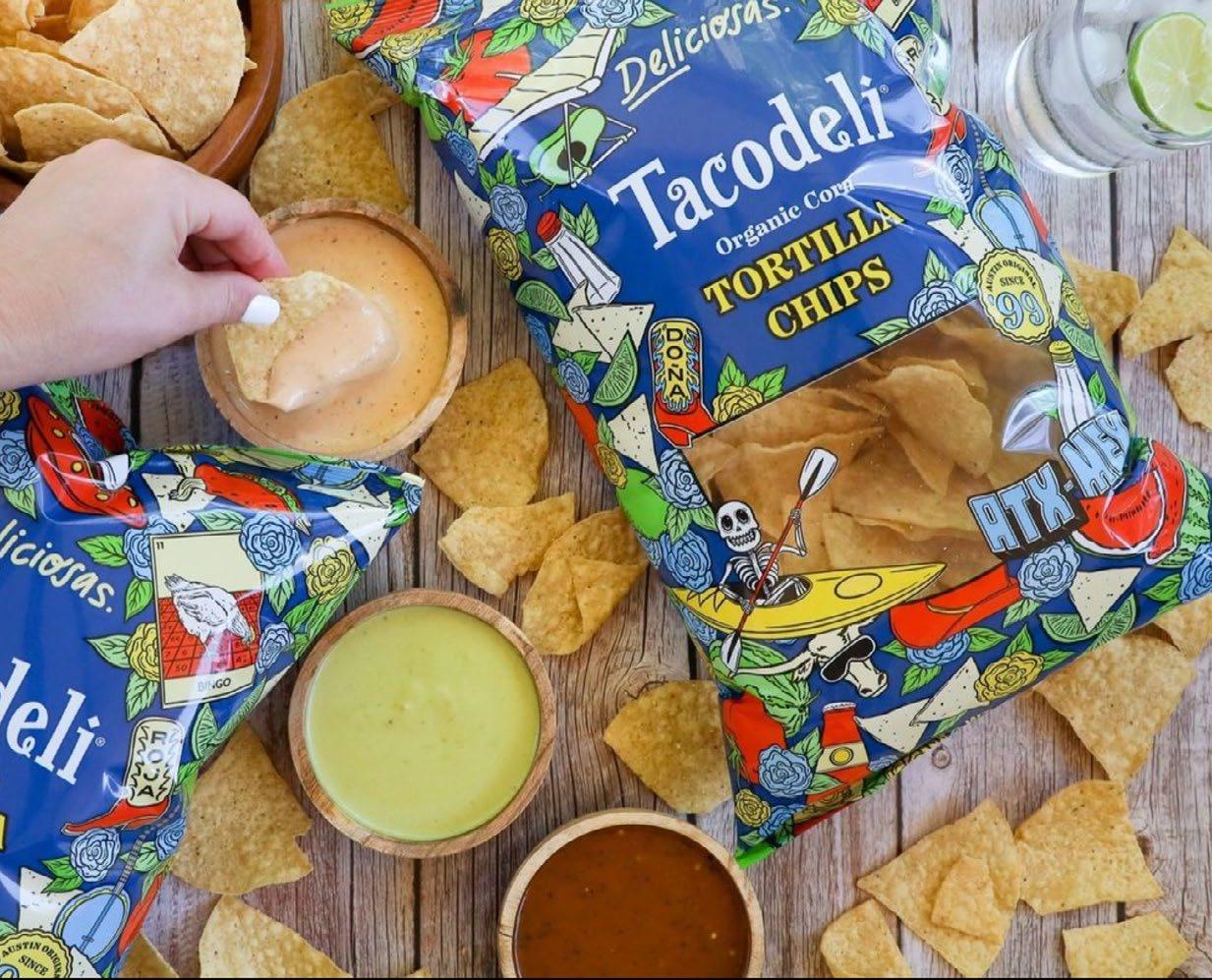
Salsa, the first product we have launched for consumer retail that is not in our restaurants. The reason for that is the salsas available in our restaurants are, for the most part, used as toppings on a taco. And one thing that consumers were asking for is a more traditional tomato salsa that they can dip chips in.
We also we launched tortillas in about a hundred Whole Foods stores this past year, and we’re excited about the early success. We serve 6 million flour tortillas a year in our restaurants, and we have a great local Texas tortilla maker that follows a specific recipe just for us. Our tortillas are in the refrigerated section at Whole Foods because there are no preservatives in them.
What we think about our brand is, “We’ve Got Your Taco Night Covered.” We want customers in grocery stores to feel that they can elevate their taco night with Tacodeli.
eRM: Do you work with a broker or distributor to get your products into stores?
Day: We work with the sales brokerage firm Cultivate. They’ve done a really nice job so far. With HEB, we serve them direct, and with Whole Foods, we go through a distributor, UNFI, a big natural foods distributor.
eRM: Do you sell any products to other restaurants or other foodservice clients?
Day: Not yet. We’re not saying no to that, but a lot of foodservice operations want a fairly generic, cheap salsa. We sell a more premium product, so we haven’t found it to be necessarily
“What we think about our brand is, ‘We’ve Got Your Taco Night Cov ed.’ We want cu om s in groc y or to f l that they can elevate their taco night with Tacodeli.” JEFF DAY
a perfect fit. But we do think about partnering with certain restaurants, especially in Texas, where we have great brand equity. They would be able to say, “We serve Tacodeli’s queso on our menu, or we serve Tacodeli’s Salsa Doña.” We’ve had some initial conversations with some restaurant groups about that.
eRM: Do you see some benefit beyond the additional profit from the retail sales?
Day: We know the awareness of the restaurants helps drive sales of the retail goods, but we also know that as our retail sales have expanded in many places where we have more presence in the retail world than the restaurant world, the retail sales are creating a halo impact back to our restaurants.
eRM: What does the future hold for your retail sales?
Day: Currently we’re in about a hundred Whole Foods stores, and in June, we’ll be in 500 Whole Foods stores across the country. And now we are getting into HEB, which is a major Texas retailer. We hope to build off that and continue to partner with major retailers across the country.
eRM: If another restaurant came to you said, “We want to sell our salsas at retail, too,” do you have some advice?
Day: Number one, I would say know what you’re getting into. The recipe for success in the restaurant and hospitality world is incredibly different than the recipe for success in consumer product goods (CPG). Also be well capitalized in order to fund the inherent investment that’s required to grow a CPG brand. You also have to be really honest with yourselves about what compromises you are willing to make to ensure your products can go to grocery stores nationwide and have a long shelf life and all of those things. You need to be able to keep your product quality as close to what has become special as you can. Sometimes the compromises might be so great that it’s no longer worth it, and sometimes you can do it really effectively.
HAGA






BY ED AVIS | The robots are coming! That might sound like a nightmare, but for many Mexican restaurant owners, using a robot to tackle tasks is more like a dream solution to employment problems.
According to an el Restaurante reader survey, more than half of Mexican restaurants say that finding employees is harder now than before. And with minimum wage increases in many states, it’s no surprise that restaurants are turning to technology for help. In California, for example, the overall state minimum wage of $16 took effect January 1, and as of April, California-based fast-food workers for chains with 60 or more locations around the nation started earning at least $20 an hour.
“Initially we were using robots because we couldn’t find help,” says restaurant consultant Izzy Kharasch, president of Chicagobased Hospitality Works, , who has three clients who have tried robots. “But more and more of my clients are looking at robots as a real cost savings in terms of labor.”
While robots can handle several jobs in restaurants, bringing plates of food to customers’ tables is the most common one. YouTube is full of videos of smiling robots relieving human servers of that tiresome task.
“When you carry food all day on your arm, that’s about 100 plates,” Raul Ugalde, owner of Casa Tequila Mexican Grill in Rock Hill, South Carolina, told WCNC Charlotte last July. “With this you can make the job easier.”
Casa Tequila uses BellaBot, a food runner designed by PUDO Robotics that has four shelves and a happy, cat-like face on its customer-facing screen. A human puts the plates on the shelves and tells the robot — by voice or via the touchscreen — which tables to visit. Typically, the human server notices when the robot is approaching a table and finishes the delivery by setting the plates in front of the right guests.
“She’s very entertaining, you can touch the ears and all that and it smiles, and it is more like a fluffy welcoming Bella,” Raul’s son Jesse Ugalde told the news outlet.

BellaBot is just one of many robot servers now on the market. Other highly rated models include Servi from Bear Robotics and Matradee from Rightech Robotics.
Some robots work in kitchens, typically handling repetitive tasks such as chopping vegetables, stirring ingredients and even cooking some menu items. The Frybot from Middleby, for example, is a multi-component system that dispenses frozen items into a deep fryer, lifts the basket at the right moment, and keeps the cooked food hot.
Specific to Mexican food, last October Chipotle announced it is testing a system that automatically makes burrito bowls and salads. Developed in collaboration with kitchen automation company Hyphen, it takes its commands from orders placed in Chipotle’s app. When an order includes a bowl or salad, the robot positions the plastic container under the appropriate ingredient container, and a dispenser drops in the correct amount. The completed salad or bowl pops up through a hole in the countertop at the end of the line and a human employee puts the lid on.
“Approximately 65 percent of all Chipotle digital orders are bowls or salads, so the cobotic digital makeline has the potential to free up more time for employees to service the front makeline and deliver exceptional hospitality, while simultaneously increasing capacity for digital orders during peak periods,” a press release said. “The new digital makeline could also help enhance digital order accuracy, improving the guest experience.”
Robots can be dependable source of labor for specific tasks, and that can translate to cash savings.
“Some companies are leasing robots for $1,200 a month,” Kharasch says. “A runner position in a restaurant could cost $150 a day, so if that robot allows you to get rid of a runner, you’re talking about $4,500 a month saved. Do the math and you see that you’re getting $3,300 in savings per month. Essentially the restaurant has just added $40,000 in profits for the year.”
Ed Avis is the publisher of el Restaurante
“Initia y we w e using robots because we couldn’t find help. But more and more of my clients are l king at robots as a real co savings in t ms of labor.” IZZY KHARASCH


About two-thirds of Mexican r taurants s ve alcohol to-go… [and] the Margarita is the mo popular to-go cocktail at Mexican r taurants… it topped the li of b t to-go se s for nearly 90 p cent of survey r pondents.
| BY ED AVIS | A regular customer of Pérez Mexican Restaurant & Cantina in Shelbyville, Missouri does something that was simply impossible a few years ago: They order a full gallon of Margaritas to go.
“This family lives away during the winter months and before they leave, they buy a gallon so they can enjoy our Margaritas,” says owner Marlys Perez Anderson. “We have several customers who report that they are very glad we offer this.”
Selling to-go cocktails is an important component of alcohol sales, says Perez Anderson. In addition to the gallon-size cocktails — which normally are sold to people having cookouts, weddings and other large events — the restaurant sells 32-oz. takeout containers of cocktails. And it’s not just margaritas — the restaurant also offers to-go Mojitos, Palomas and other mixed drinks, as well as beer and wine.
“We also see a huge increase when there’s a local event in town,” Perez Anderson says.
About two-thirds of Mexican restaurants serve alcohol to-go, according to an exclusive April 2024 reader survey by el Restaurante. And it plays a reasonably significant role: On average, to-go sales account for about 12 percent of alcohol sales, according to the survey. That figure hasn’t changed much since el Restaurante’s July 2022 about this topic. At that point the
average was about 13 percent.

The Margarita is the most popular to-go cocktail at Mexi can restaurants, which is no surprise; it topped the list of best to-go sellers for nearly 90 percent of survey respon dents. Interestingly, the second-best seller is wine, perhaps because bottles of wine are easy to deliver (though some states limit bottle sales, probably to protect liquor store business). “Other mixed drinks” (not including Palomas or Mojitos) was the next best-selling category, followed by beer. Mojitos and Palomas rounded out the list of good sellers.
At Polo’s Authentic Mexican Restaurant in Ada, Oklahoma, Margaritas are the only cocktail available to-go, reports owner Yolande Vazquez. The restaurant sells the cocktails in 16-oz. plastic bottles, half-gallon and full-gallon containers. Polo’s is a family restaurant, Vazquez says, so she doesn’t promote the to-go alcohol sales often, unless a holiday is coming up.
“During the pandemic, Oklahoma wouldn’t let us sell alcohol; we could only sell the mix and people had to put in the tequila at home,” Vazquez says. “Maybe a year later the law changed and we could offer alcohol to-go.”

2 OZ TITO’S HANDMADE VODKA
½ OZ ORANGE LIQUEUR
2 OZ LIME JUICE
¼ OZ AGAVE
Add all ingredients to a shaker with ice.
Shake and strain into a glass with or without fresh ice.
Garnish with a lime slice.
Pro-Tip: If you like it salty, use a glass with a salted rim.





el Restaurante researched the current status of laws in five states with the most Mexican restaurants. For further details about the rules in these or any other states, search online for “to-go liquor rules” in your state.
California: Restaurants in California can sell cocktails and wine to-go (but not beer), subject to a long list of conditions. For example, the alcohol must be picked up in person (it can’t be delivered) and it must be in a container with a sealed lid.
Florida: Restaurants in Florida can sell alcoholic beverages for o sumption as long as the drinks are part of a food purchase. The drink must be in a sealed container, and if it’s not in the original manufacturer’s package, it has to be put in the trunk of the car or some other secure place while the customer is driving home.
Illinois: Restaurants in Illinois can sell to-go alcoholic beverages, but they must be in sealed containers and placed in the car’s trunk when the customer is on the way home. Unlike some states, Illinois does permit the delivery of alcohol, but not by third-party companies.
New York: Restaurants in New York can sell to-go alcoholic beverages as long as they’re accompanied by a food purchase. Also, the to-go price must be the same as the price for people drinking in the restaurant.
Texas: Restaurants in Texas can sell beer, wine and mixed drinks with take-out and delivery orders. The alcoholic beverage must be in a sealed container.
COVID CHANGED THE SCENE
Oklahoma was a little late to make the change. Many states realized as soon as COVID hit that the very survival of restaurants was threatened. Those states figured out that allowing takeout alcohol sales could help restaurants withstand the pandemic — and keep homebound customers happy.
In the years since the pandemic has subsided, most of those states have made those changes permanent, or at least extended them beyond the original date of expiration. The legislation permitting to-go alcohol sales generally includes rules such as the beverage must be in a sealed container, it must be accompanied by a food purchase, and it
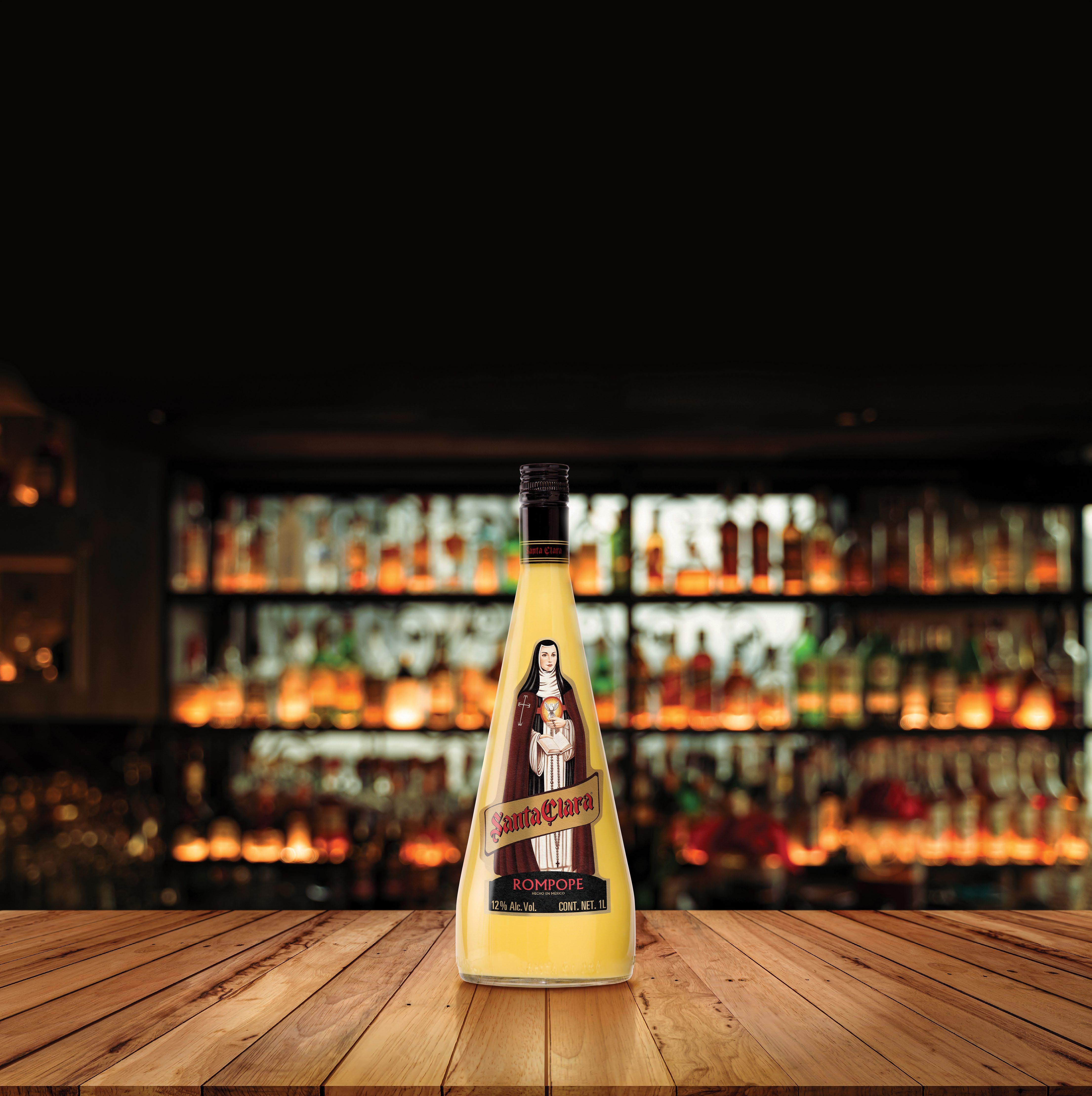

Experience the culinary magic of Rompope Santa Clara as it elevates your customers' dining journey with an irresistible selection of both timeless classics and innovativ rompope-infused desserts, beverages, and delectable dishes, ensuring each bite is a symphony of avor and delight.
Find Rompope Santa Clara at your nearest distributor and indulge in the taste of tradition today!

MegaMex Foods DONA MARIA® Mole Rojo. Created for foodservice, this mole is crafted in Mexico with mild ancho and poblano peppers, peanuts, sesame seeds and a touch of real chocolate to deliver the authentic flavor of a generationsold family recipe. Just heat 64-ounces of water or broth with one container of mole paste and whisk over a low heat until smooth. megamexfoodservice.com
BE&SCO Manufacturing 12-18 Wedge Press. Discover a world of flatbread possibilities with this press! It’s thoughtfully designed with reliable features that let you to produce a variety of fresh doughs to the same consistent thickness and diameter with every press! 210-734-5124; bescomfg.com

Ajinomoto Foods North America’s Revel Eats
Guacamole Bites. These appetizer-appropriate snacks feature smashed avocados, diced tomatoes, onions, jalapeños, cilantro, and lime juice in a breaded, crispy tortilla chip coating. 866536-8008; 909-477-4700; ajinomotofoodservice.com

Performance Food Group
Contigo® Cinnamon Churro Style Cheesecake. This dessert marries traditional NY style cheesecake with vanilla and cinnamon flavors to create a one-of-a-kind dessert. The graham crumb crust is filled with cinnamon cream cheese filling, then finished with vanilla cake studded with cinnamon and topped with cinnamon and powdered sugar. performancefoodservice.com


Grecian Delight | Kronos ReadyCarved® Pork Al Pastor. Vacuum marinated, hand stacked on a traditional spit, flame-broiled rotisserie style, and carved off the cone, this fully cooked meat offers an efficient way to serve Puebla, Mexico street food. To find a distributor call 800-621-4387; gdkfoods.com

V&V Supremo Chicken Chorizo. Made from premium cuts of chicken, this new chorizo gives restaurant operators the opportunity to add menu items that appeal to customers who prefer poultry over beef and pork — and it delivers the authentic Mexican flavor guests love. Vvsupremo.com/fs

Almave Non-alcoholic Blue Agave Spirit. This spirit is made in Mexico following tequila distillation techniques — it just skips the fermentation process. Serve over ice for sipping or in any cocktail traditionally made with tequila. Almave Ambar and Almave Blanco available. almave. com; email sales@ almave.com

Tortilla Masters Molino Masters Tabletop Corn Grinder. This grinder — the first NSF and UL tabletop corn grinder restaurants can use to make masa — can produce up to 140 pounds of masa per hour. It can be used with 7” x 3” grinding discs or volcanic stones. Made in the USA. tortillamasters.com
Veggies Made Great Jalapeño Cornbread. Whole corn kernels and jalapeño deliver a balanced blend of sweet heat. Menu as a breakfast item, snack or side dish. Gluten-free, soy-free, sesamefree, and peanut/treenut-free. veggiesmadegreatfoodservice.com

 sponsored by Sammic
sponsored by Sammic


Get out your salsa-making ingredients and create a unique foodservice salsa recipe you think has the consistency and flavor to wow the judges. The grand prize winner will receive a Sammic XM-52 Immersion Blender and $750. Second and third place will receive $500 and $250, respectively. Plus the top three recipes will be featured in the NovDec issue of el Restaurante.
All readers of el Restaurante are welcome to enter the contest. The recipe must be an original recipe of your own creation. There are no restrictions on the ingredients of the recipe. All recipes will be judged on taste, creativity and appropriateness for foodservice applications.










Black Rice Burrito Bowl
Makes 6 servings
Recipe by Nina Curtis, Director and Executive Chef of Plant’ish & Co.
Culinary Arts
2 c. black rice
4 c. vegetable stock (for cooking rice)
2 c. cooked black beans
1 c. diced carrots
1 c. diced zucchini
1 c. diced bell peppers (any color)
1 c. diced white onions
2 cloves garlic, minced
1 t. onion granules
1 t. ground cumin
1 t. smoked paprika
½ t. chipotle powder
Salt, to taste
Avocado cooking oil
Endive leaves, for serving House-made guacamole (restaurant’s own)
Pico de gallo (restaurants’ own)
Cashew Sour Cream (recipe follows)
Cook the black rice according to the standard instructions, using vegetable stock instead of water for added flavor. Set it aside.
In a large skillet, heat avocado cooking oil over medium heat. Add the diced carrots, bell peppers, and white onions to the skillet.
Cook until softened, about 5 to 7 minutes, and add the zucchini halfway through the cooking process (you don’t want to overcook the zucchini).
Add the minced garlic, onion granules, ground cumin, smoked paprika, chipotle powder, and salt to the skillet.
Stir well to combine and cook for another 2 to 3 minutes, allowing the flavors to meld together. Remove from heat.
To assemble the Burrito Bowls: Divide the cooked black rice among six serving bowls. Top each bowl with a portion of the cooked black beans and sautéed vegetable mixture. Serve with a dollop of housemade guacamole and pico de gallo on top.
Add a dollop of the Cashew Sour Cream on top of the pico de gallo. Garnish with cilantro leaves or micro greens. Instead of traditional flour tortillas, serve with endive leaves for a lighter, gluten-free option.
The Cashew Sour Cream:
2 c. cashews (soaked for 2 to 4 hours, rinsed and drained)
1 c. filtered water
¼ c. apple cider vinegar
1 T. lemon juice
1 T. onion powder
½ t. crystal salt (adjust to taste)
Blend all ingredients in a blender until smooth and creamy. Chill for two hours before serving.
Soyrizo Tacos
Recipe courtesy of Lulu Duran, Cesar’s Killer Margaritas, Chicago
4 oz soy chorizo
1½ c. peeled and diced potato
¼ c. thinly diced purple onion
Salt, to taste
1 t. pepper
1 t. garlic powder
2 t. olive oil
Red onion, sliced, for garnish
Salsa, for garnish
Tortillas
Begin by placing oil on a warm pan. Add diced purple onion, allow to soften. Add potatoes and spices, and let cook for 5 minutes. Once potatoes are browned, add the soyrizo.
Break down with spoon and allow to emulsify with the onions. Cook down for 5 to 8 minutes, turn heat down for 1 to 2 more minutes; set aside.
Warm tortillas on a warm pan, flipping them until soft and warm. Fill tortillas with potato and soyrizo mix, top with sliced red onion and your salsa of choice. Provecho!
Cauliflower Ceviche
Recipe courtesy of Tacotarian
2½ c. fresh lime juice
2 c. orange juice
4 cups diced tomatoes
2 cups chopped cucumber
1½ c. chopped fresh cilantro
2 c. chopped white onion
3 oz. salt
6 heads cauliflower, chopped
3 oz. cooked jalapeños, seeded Pico de gallo, for garnish
Avocado, sliced, for garnish
Fill a large pot with water and bring to a boil. Once water has boiled, put cauliflower inside, turn off heat, let cauliflower sit inside pot from 3 to 5 minutes. Take cauliflower out and place in a large metal strainer, add ice on top, and let cool.
In a bowl, mix tomatoes, cucumber, onion, jalapeño and cilantro; add lime juice, orange juice and salt; finally incorporate the cauliflower and mix thoroughly. Top with pico de gallo and avocado. Serve with tortilla chips.
Poblano Corn Flatbread with California Crema
Recipe courtesy of California Milk Advisory Board (RealCaliforniaMilk.com)
Makes 4 to 6 servings
2 medium fresh poblano or pasilla peppers
1 ball prepared pizza dough
Masa or flour for work surface
⅓ c. Real California Crema
Mexicana Agria (Mexican sour cream)
⅓ c. salsa verde, plus extra for topping
2 c. crumbled Real California Queso Fresco cheese
½ c. crumbled Real California Panela cheese
½ c. quartered and thinly sliced white onion
1 ear fresh corn (or 2/3 c. frozen or no salt added canned corn)
2 T. roasted, salted pumpkin seeds
Fresh cilantro leaves (optional topping)
Use a grill, broiler, or gas stovetop burner to cook peppers, turning occasionally, until well charred, 12 to 15 minutes. Transfer to a bowl, cover and set aside 5 minutes.
Preheat oven to 450°F and line a large baking sheet with parchment paper. Meanwhile, rub charred skin from peppers; remove stems and seeds and cut peppers into strips.
On a lightly floured work surface, roll dough out to a 10-by15-inch rectangle. Transfer to the prepared baking sheet and top with salsa verde, crema, cheeses, onion, pepper strips, and corn. Bake until pizza is golden, 12 to 15 minutes.
Serve sprinkled with pumpkin seeds and cilantro, if using.
Michelin-trained Chef Scott Koshnoodi recently launched a new Persian-, Texan-, and Mexican-inspired food and beverage program at Parklife Taqueria in Brooklyn. Pulling from his Persian-Texan roots (Koshnoodi fled Iran at a young age to join his family in Texas) and food sciencedriven techniques, the new menu includes tastes from a variety of cultures.
One of those items pays homage to the chef’s Texas upbringing: his popular, upscale version of Frito Pie, a dish that features beef and potato chili, frito adobo, escabeche, and tortilla chip.
“I was looking to have something specifically ‘Texan’ on the menu and Frito Pie was an obvious choice,” Koshnoodi told el Restaurante. “The origins are humble, with chili and fritos being the main attraction, but that doesn’t mean it isn’t delicious in its traditional way. I just wanted to take those flavors and riff on them with the techniques used to cook and present them. It’s more ‘stylized,’ but the flavors should be familiar to anyone that’s had a Frito Pie.”

Frito Pie
Brisket Flat (I use the flat to stay true to a chili’s roots — lean, affordable meat)
3 T. tallow
2 small onions
1 garlic head
5 T. advieh (ground spice mix: 1 part cumin, pink peppercorn, mustard seed, allspice, and ½ fennel seed)
3 anchos (de-stemmed, de-seeded)
3 cascabels (de-stemmed, de-seeded)
3 negro pasillas (de-stemmed, de-seeded)
5 moritas (de-stemmed, de-seeded)
3 guajillos (de-stemmed, de-seeded)
Beef stock
1 pint stout or porter
2 small potatoes
Masa
Escabeche and tortilla chip, for garnish
The Frito Adobo:
1 garlic head
1 shallot
Tortilla chips
1 morita (de-stemmed, de-seeded)
1 ancho (de-stemmed, de-seeded)
The Cooking Process:
Season and sear the brisket in tallow. Reserve meat and sauté sliced onions and garlic in the same pan with brisket sucs* until tender. Add advieh to pan and mix. Add chiles to pan and mix. Add stout or porter to pan and reduce by half.
Add brisket to pan. Add beef stock to cover and bring up to boil. Reduce temp to low and cover until brisket is tender (~ 3 hrs). Cook potatoes in seasoned water until tender. Once cooled, cube.
The Building Process:
Allow brisket to cool overnight in stock and aromatics. Once cooled, remove the fat cap from the top.
Heat brisket and stock mix until warm and shred brisket. Blend stock and aromatics until smooth. Reduce until full flavor and season. Add mixture to shredded brisket until very moist but not soupy.
Using a mold of your choosing, add moist brisket mix to the mold. Fill halfway up, add potato cubes, then add brisket on top to fill out the mold. Freeze meat in mold.
Once frozen, wrap with masa in a thin layer but be careful to not have any openings. Allow to unfreeze in the refrigerator until thawed out.
The Frito Adobo:
Using a spice grinder, pulse tortilla chips. Blanch the sliced shallots/garlic 3 times. Dehydrate until fully dried. Pulse in a spice grinder. Dehydrate ancho and Morita chiles until fully dried; pulse in a spice grinder. Combine ingredients to taste.
To serve: In a 350°F fryer, drop thawed masa-covered brisket chili. Check with a cake tester after 5 minutes to see if the center is warm. Once done, season with Frito Adobo and salt. Serve either whole or cut.
*The deposit of browned sugars, carbohydrates, and/or proteins on the bottom of the pan, along with any rendered fat .


